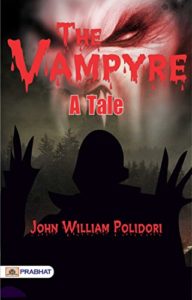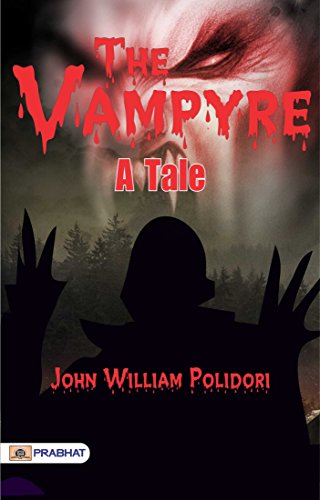 The Vampyre: A Tale by John William Polidori
The Vampyre: A Tale by John William Polidori
3.5 out of 5 stars
Reviewed by Sheila English
So, I know I’ll catch some flack for my 3.5 stars. But, I do realize this book was originally published in 1819. I have taken into consideration that time period, the way people speak, the culture of the times, etc. But, even so, Polidori is, in my opinion, one of the weaker writers of those who participated in the “dare” extended by Lord Byron. Mary Shelley’s Frankenstein is by far my favorite of that time period, and that dare.
Still, I do credit Polidori for his scare vampiric tale since it’s not just a monster story, but one in which the vampire is more cultured, though cruel and even somewhat sexy through his mystery. This novel pre-dates Stoker’s Dracula, but I feel confident Stoker read this book. So many vampire novels were to scare you, but Polidori and Stoker had vampires who people also found alluring.
If you’re good with reading or listening to the speech of the time I do recommend checking out this book. It’s a classic!
ABOUT THE BOOK
The superstition upon which this tale is founded is very general in the East. Among the Arabians, it appears to be common: it did not, however, extend itself to the Greeks until after the establishment of Christianity; and it has only assumed its present form since the division of the Latin and Greek churches. At which time, the idea becoming prevalent that a Latin body could not corrupt if buried in their territory, it gradually increased, and formed the subject of many wonderful stories, still extant, of the dead rising from their graves and feeding upon the blood of the young and beautiful. In the West it spread, with some slight variation, all over Hungary, Poland, Austria, and Lorraine, where the belief existed that vampyres nightly imbibed a certain portion of the blood of their victims, who became emaciated, lost their strength, and speedily died of consumption. Whilst these human blood-suckers fattened, and their veins became distended to such a state of repletion as to cause the blood to flow from all the passages of their bodies, and even from the very pores of their skins.
In the London Journal of March 1732 is a curious, and, of course, credible account of a particular case of vampyrism, which is stated to have occurred at Madreyga, in Hungary. It appears that, upon an examination of the commander-in-chief and magistrates of the place, they positively and unanimously affirmed that, about five years before, a certain Heyduke, named Arnold Paul, had been heard to say, that, at Cassovia, on the frontiers of the Turkish Servia, he had been tormented by a vampyre, but had found a way to rid himself of the evil by eating some of the earth out of the vampyre’s grave and rubbing himself with his blood. This precaution, however, did not prevent him from becoming a vampyre himself. For about 20 or 30 days after his death and burial, many persons complained of having been tormented by him.






